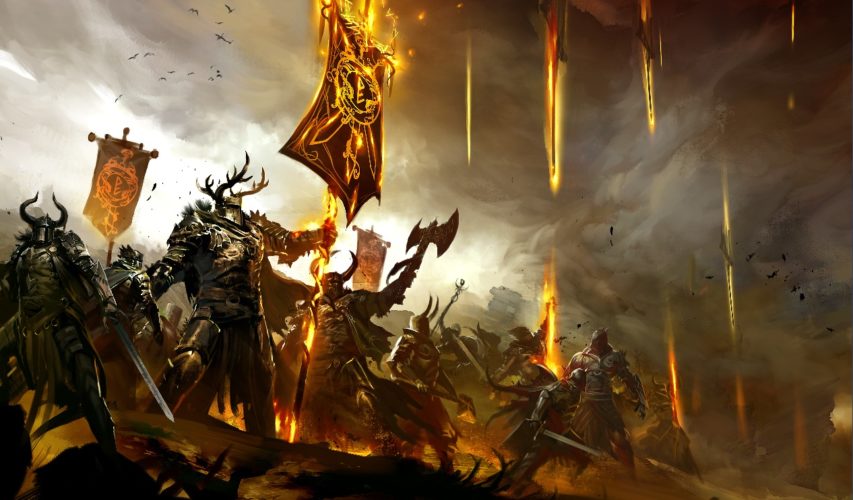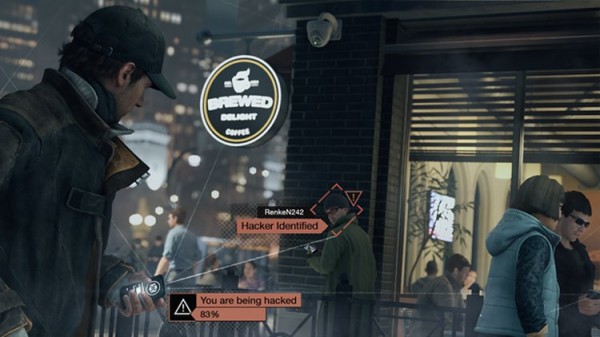Reviews & Previews
Watch Dogs Review

Watch Dogs was never going to be a revolutionary experience that you could only get with next-gen consoles but it did promise an an interesting spin on the open-world formula. Make no mistake, Watch Dogs is a good game but that almost seems like it is not quite enough when it was very clear that it was engineered to be amazing. It might not deliver on the visual fidelity of its E3 2012 reveal but it definitely gives us a fun spin on a genre’s predictable gameplay with new twists on old concepts.
Watch Dogs takes place in a vaguely futuristic Chicago. Virtually everything is controlled by the ctOS (Central Operating System) and data on all citizens is stored within. Eleven months after a botched hacking operation led to the death of his niece, protagonist Aiden Pearce decides to take justice into his own hands. A larger noir-like narrative swallows up his quest for revenge but it never really strays too far from cliché and foreseeable territory.
You might have heard that Ubisoft described Aiden as “iconic” which is questionable at best and hilarious at worst. Watch Dogs does not have a strong cast of compelling characters although it really wants you to believe that it does. Each short-lived moment of sympathy I felt for Aiden was lost amidst the generic dialogue, the monotonic and stereotypical “gruff” voiceover or the tonal inconsistency. Aiden commits some pretty morally questionable acts in his quest for vengeance but it is hand waved away because his enemies, without exception, are corrupt in some way.
Where Watch Dogs shines and delivers, however, is its gameplay. Let’s be honest, the premise of an entire city relying on a single operating system for nearly everything is ridiculous. Watch Dogs revels in this absurdity and it is all the better for it. Aiden’s smartphone is an enormously powerful tool that allows you manipulate the world around you, environment and citizens alike. Want to cause an enormous blackout and sneak around? You can do that. How about causing an 8-car pile up by changing the light at the intersection to green? Go hog-wild!
Compared to Infamous: Second Son’s beautiful but otherwise lifeless imagining of Seattle, Watch Dog’s Chicago is essentially the opposite. Personally, I enjoyed the fun-sized bits of detail the smartphone’s Profiler app gave me. Just the name, occupation, salary, and an occasionally goofy little tidbit of information was already pretty substantial work towards making the city feel lived in but the interactions you can have with anyone’s phone sealed the deal for me. You can download their music, steal their money right from their bank account and even intercept their text messages or phone calls. Aiden is more or less always going to be a criminal of sorts though the people’s perception of him influences how willing they are to call the cops, but the game itself never explicitly condemns or rewards you for these decisions so feel free to peek away.
While the one-button hacking seems superfluous, there is really no other way it could have worked. It either would have been a very tedious minigame that was not worth the hassle or endless QTEs that would kill the flow of gameplay. The result is a very easy way of accessing a varied toolset and the game would have suffered if it were any other implementation. This is particularly true of combat scenarios where the hacking mechanics really get their turn in the spotlight.
Hacking security cameras gives you a way to check out all of your options while you are planning your moves from behind cover. Leaping between lenses is a very interesting experience, but Aiden’s skills are not limited to this alone. You can overload transformers, set off explosives, simply distract guards with a message, and more. Aiden is also capable of crafting lures on the fly, which he can then hack and lead guards away from their position. While these encounters can be cleared with a clever combination of hacking and stealth, there is a satisfying arsenal to fall back on and the cover system is perfectly functional. This is good because Aiden is on the frailer side of action heroes—which is appropriate, considering that he really is just a hacker. Unfortunately, this is at odds with the immensely boring tailing and autofail stealth missions that are a little too reminiscent of Assassin’s Creed and just a slog that destroys the game’s pacing. Driving, as well, can be a bit of a bother with some finicky handling and fishtailing but it is never unplayably bad.
There is an enormous breadth of content within the game outside of these hacking shenanigans but some of them seem more like bloat than actual content. This happens to be the case because the minigames that Aiden can play have skill tress all their own that have nothing to do with his progression or new abilities. These minigames are certainly substantial though and in some cases have very clearly borrowed inspiration from Saint’s Row IV in their augmented reality silliness. Spider Tank, which I found to be completely insane, is basically what it sounds like. You get control over a walking tank and your goal is to cause as much destruction as possible with the occasional mission. Beyond these, there is a very respectable amount of side missions to tackle, unlocking different vehicles and skills as you accomplish them.
Beyond its entertaining single player options, Watch Dogs brilliantly takes a page out of Dark Souls’ book and seamlessly integrates online multiplayer into its single player experience. Similarly to the Souls series’ invasions, you may find your ‘data’ being stolen from afar while you play. These thieves appear in your game disguised as ordinary civilians and it is up to you stop them. When the warning pops up on your screen, it is sure to throw you into a brief anxiety. It beautifully captures everything Watch Dogs represents: the dangers of the violation of privacy and principles of security. It is an interesting blend of impromptu Assassin’s Creed multiplayer with the spontaneity of the Souls series that works out very well and will most likely have a longer lifespan than the online racing or standard objective-based multiplayer modes.
It has a bit of a struggle figuring out exactly what it wants to be, but Watch Dogs is at its best when you take a step back and revel in its absurdity and enjoy it for its existence as a game first and a narrative attempt second. If you are really on the fence about Watch Dogs, ask yourself whether or not you liked the first Assassin’s Creed, flaws and all, because Watch Dogs is similar in many respects. Their protagonists are uninteresting and their narratives are sort of meandering. They both lack a certain sense of polish that, in Assassin’s Creed’s case, Ubisoft explored and refined as the series went on. As games, though, they are great for just running around and goofing off. Should Ubisoft choose to expand on Watch Dogs as a franchise it will undoubtedly improve.
Where Assassin’s Creed lacked polish, Watch Dogs lacks conviction in what it is trying to do so it ends up trying its hand at everything, occasionally directly pulling concepts from other games. As a result, the final product is absolutely enjoyable if a little unfocused. It delivers on its promise of a unique experience in an open world and can be hysterical in its arcade-like experience, and sometimes that is more than enough. The sheer variety of options that you have, be it on foot, in a vehicle, combat, you name it, will make sure your approach never gets too stale. The hackneyed story will not be winning any awards and it might not be game changer Ubisoft had hoped for, but you will not regret the time you spend with Aiden and his magical hacking smartphone.
Final rating:
Reviews & Previews
Valorant Game Review: Gameplay, Monetization, and Safe Top-Up Tips

Introduction: Enter the World of Valorant
Riot Games’ Valorant has become one of the most influential tactical shooters in recent years, blending precise gunplay with hero-style abilities. Unlike traditional FPS titles, Valorant requires players not only to aim well but also to think strategically about agent abilities, team synergy, and map control.
As players explore the game, many are drawn to unlocking weapon skins, battle passes, and premium bundles that enhance the overall experience. These items require in-game currency, which can be acquired when you choose to buy Valorant points. For a secure and smooth transaction, I’ve found LootBar to be one of the most reliable platforms, offering fast service and peace of mind when topping up.
Core Gameplay and Mechanics
Valorant is built on competitive integrity and teamwork. Each match pits two teams of five against each other, with one side attacking and the other defending. The attackers plant the “Spike” (similar to a bomb), while the defenders aim to prevent detonation.
What makes Valorant stand out is its unique blend of classic FPS gunplay with hero-based abilities. Unlike pure shooters, where winning relies solely on aim, Valorant demands strategic use of smokes, flashes, heals, and other utility skills. This layered complexity ensures that no two matches feel the same.
For casual players, the game offers quick modes like Spike Rush and Deathmatch, making it easy to enjoy Valorant in short sessions. Hardcore players, meanwhile, can grind ranked matches, aiming to climb from Iron all the way to Radiant.
Agents and Customization
The roster of agents in Valorant is one of its biggest attractions. Each agent has unique abilities that can turn the tide of a match, from duelists designed to secure kills to controllers that manipulate the battlefield with smokes and walls.
Customization plays a huge role in keeping the game fresh. Skins for weapons are more than just cosmetic—they provide sound effects, finishers, and animations that add flair to your victories. While skins don’t alter gameplay balance, they are highly sought after in the community, becoming a way to show identity and prestige.
This is where Valorant Points (VP) come in. Skins, bundles, and event passes all require VP, making them the primary currency for players who want to personalize their gameplay.
Valorant’s Payment System and Monetization
Overview of In-Game Purchases
Valorant uses two main currencies:
· Valorant Points (VP): Purchased with real money and used for skins, bundles, and event passes.
· Radianite Points (RP): Primarily used to upgrade weapon skins, often acquired alongside VP.
Players frequently invest VP to unlock exclusive cosmetics, such as seasonal collections, limited bundles, or battle passes. These time-sensitive offers often create a sense of urgency, encouraging players to recharge quickly so they don’t miss out.
Pay-to-Win Considerations
One of the strongest aspects of Valorant’s system is that it avoids being “pay-to-win.” Spending money does not grant raw gameplay advantages—accuracy, reflexes, and teamwork still determine victory. Instead, purchases enhance the game’s aesthetic and social experience.
That said, investing in skins can save time compared to grinding for smaller rewards, and it allows players to participate fully in seasonal events without limitations.
Safe, Fast, and Reliable Top-Up Solutions
When it comes to topping up, safety and speed are critical. Players don’t want to risk their accounts or experience delays. That’s why many turn to platforms like LootBar, which emphasize secure transactions, fast delivery, and a smooth user interface.
LootBar stands out with strong trust metrics and a reputation among gamers for reliability. Using it ensures you can focus on playing Valorant, rather than worrying about whether your points will arrive on time.
Community, Social Features, and Competitive Scene
Valorant thrives not only as a game but also as a global esports phenomenon. It’s ranked ladder fuels competition, while international tournaments like the VCT (Valorant Champions Tour) attract massive audiences.
For casual players, the game’s social features make it easy to connect with friends, form squads, and join communities. Limited-time events and seasonal missions encourage teamwork and participation, keeping the community active year-round.
This dual approach – serving both casual and competitive players—is one of Valorant’s greatest strengths.
Pros and Cons of Valorant
Pros
· Tight, strategic gameplay with high skill expression
· Wide roster of agents with unique playstyles
· Regular updates and seasonal events keep the game fresh
· Strong esports ecosystem and global recognition
Cons
· Steep learning curve for beginners
· Skins and bundles can be costly
· Free players may face long grinds to maximize progress
While these drawbacks exist, they are softened by the fact that the core gameplay remains free-to-play and fair. Occasional VP purchases can help smooth the journey without undermining balance.
Tips for New Players
For those just starting out, it’s wise to:
· Begin with easier agents like Phoenix or Sage to learn core mechanics.
· Play unranked modes before diving into competitive matches.
· Save Valorant Points for bundles or battle passes, which offer more value.
A small VP purchase early on can also give new players access to skins that make the experience more enjoyable, without being overwhelming.
Conclusion: Is Valorant Worth Playing?
Valorant has cemented its place as one of the best tactical shooters available today. It combines strategic depth, fast-paced gunplay, and a thriving community, making it appealing to both casual and competitive players.
For those looking to personalize their journey, unlocking skins and bundles is part of the fun. The safest and most convenient way to do so is to buy Valorant points through LootBar. With a trusted platform handling the transaction, players can focus on what matters most—outsmarting opponents and enjoying every match.
Features
Exploring Valorant eSports Stats: Unveiling the Metrics Behind Competitive Excellence

In the rapidly expanding realm of Valorant eSports, statistical analysis plays a pivotal role in understanding player performance, team dynamics, and the strategic nuances that define success in competitive play. This article delves into the significance of Valorant eSports stats, their impact on the competitive landscape, and how they empower players, teams, and fans alike.
Key Metrics in Valorant eSports Stats
Valorant eSports stats encompass a wide array of metrics that provide insights into player proficiency and team strategies. These include individual performance indicators such as kill-death ratios (K/D), average damage per round (ADR), headshot percentages, and assist counts. Team statistics such as round win percentages, first blood percentages, and economy management efficiency further illuminate strategic strengths and areas for improvement.
Analyzing Player Performance and Contribution
For professional Valorant players, statistics serve as a critical tool for evaluating individual performance and contribution to team success. By analyzing metrics like K/D ratios and ADR, players can assess their impact in securing eliminations, dealing damage, and supporting team objectives. This data-driven approach enables players to identify strengths to leverage and weaknesses to address, enhancing their overall effectiveness in competitive matches.
Strategic Insights and Adaptation
Valorant eSports stats provide valuable strategic insights that shape team tactics and gameplay adaptations. Coaches and analysts analyze statistical trends to optimize agent selections, refine map strategies, and counter opponents’ playstyles effectively. The ability to leverage data-driven decision-making empowers teams to evolve their tactics, adapt to meta-game shifts, and maintain a competitive edge in the dynamic world of Valorant eSports.
Tracking Tournament Trends and Meta-Game Evolution
Beyond individual matches, Valorant eSports stats track broader tournament trends and meta-game evolution. Historical data on agent pick rates, map preferences, and round outcomes reveal emerging strategies and meta-shifts over time. This analytical depth allows teams and analysts to anticipate trends, innovate strategies, and stay ahead of competitors in high-stakes tournaments and league play.
Fan Engagement and Spectator Experience
Valorant eSports stats enrich the spectator experience during live broadcasts and tournament coverage. Fans can follow real-time updates on player performances, compare stats across matches, and engage in discussions about standout plays and strategic decisions. Interactive platforms and statistical dashboards enhance viewer engagement, fostering a deeper connection with the competitive narratives unfolding in Valorant eSports.
Impact on eSports Betting and Fantasy Leagues
Valorant eSports stats play a crucial role in eSports betting markets and fantasy leagues, where informed decision-making hinges on statistical insights. Bettors and fantasy league participants leverage player and team stats to assess form, predict match outcomes, and manage their investments strategically. Real-time updates and comprehensive data analysis enhance the strategic depth and excitement of eSports engagement for fans worldwide.
Technological Advancements and Data Visualization
Advancements in technology have revolutionized how Valorant eSports stats are accessed and analyzed. Streaming platforms and eSports websites offer sophisticated data visualization tools, interactive heatmaps, and player performance overlays that enhance the depth and accessibility of statistical analysis. These technological innovations provide analysts, commentators, and fans with enhanced insights into gameplay dynamics and strategic decision-making.
Future Innovations in Statistic Analysis
As Valorant continues to evolve as an eSports powerhouse, the future of statistical analysis promises further innovations. AI-driven predictive analytics, enhanced machine learning algorithms, and real-time performance tracking technologies are poised to revolutionize how eSports stats are processed and utilized. These advancements will elevate the precision, depth, and predictive capabilities of statistical analysis in Valorant eSports, shaping the future of competitive gaming.
Casual
Encouraging Growth and Motivation: Resources for Child Development

Child development is a complex journey marked by critical milestones where each stride forward builds upon the foundation of the previous one. Acknowledging children’s individual needs, pediatric therapy services tailor strategies to foster physical, emotional, and cognitive growth. To support this transformative process, environments that prompt curiosity and engagement, coupled with advanced educational tools, play an instrumental role in shaping young minds. These resources, carefully selected and applied, can significantly amplify a child’s developmental trajectory. Keep reading to learn about the effective ways these tools and techniques can aid in advancing childhood milestones.
Pediatric Therapy Services: Enhancing Developmental Milestones
Pediatric therapy services support children as they reach and surpass developmental milestones. These services, often provided by skilled therapists, address various growth challenges, ensuring each child has the best possible start in life. From speech and occupational therapy to physical and behavioral interventions, these professionals tailor their approach to meet the unique needs of every young patient.
Therapists work relentlessly to motivate children, fostering an environment where milestones are not merely achieved but celebrated. Through personalized, one-on-one sessions, children gain the confidence and skills necessary to navigate their developmental journeys more easily. The trust between therapist and child is a solid foundation for consistent progress and paves the path for lifelong learning and adaptation.
Resource provision is a key component of pediatric therapy, equipping parents with the tools to continue therapy practices at home. Effective communication between therapists and families ensures a cohesive strategy that envelops the child’s daily routine, enhancing the therapy’s impact. It also allows parents to identify subtle progress, reinforcing their pivotal role in the child’s developmental success.
If you’re looking for pediatric therapy in your area, a simple Google search like “pediatric therapy Arizona” will help you find local providers and services tailored to your child’s needs, ensuring they receive the specialized care necessary for their development.
Optimizing Play Spaces: Creating Environments for Learning and Exploration
Optimized play spaces are vital platforms where children engage with their world, build skills, and unleash their creativity. Designers of such areas pay astute attention to elements that promote safe exploration and intellectual stimulation. A thoughtfully arranged play environment serves as a place of entertainment and a crucible for burgeoning development.
Professionals incorporate a variety of tactile and visual stimuli within play areas to cater to diverse developmental needs and interests. Stimulating sensory experiences is central to cognitive and motor skill refinement among younger populations. The intentional selection of colors, textures, and interactive features sparks curiosity and encourages physical activity, which is fundamental to healthy growth.
Accessibility remains paramount in creating play spaces, ensuring they cater to children across all abilities. Including adaptive resources within these environments demonstrates a commitment to inclusive development, allowing every child to participate and benefit from the joy and learning play offers. Such inclusiveness fosters a sense of community and belonging, which is essential for emotional and social development.
Affording children autonomy in their play advances self-directed learning and problem-solving capabilities. When children feel empowered to make choices within their play, they better understand their preferences and abilities, setting the stage for confidence and self-awareness — qualities that are instrumental as children grow and transition through life’s stages.
Additionally, incorporating elements like fake plants or outdoor plants from retailers like Nearly Natural outdoor plants into play spaces can enhance children’s sensory and aesthetic experience.
Interactive Learning Tools: Technology and Resources for Cognitive Development
Interactive learning tools harness technology’s power to solidify children’s cognitive development. These digital resources provide an array of engaging, educational content that aligns with critical thinking and problem-solving skills.
Software and applications designed for children’s learning capitalize on the allure of multimedia to capture young minds. Effective education solutions provide children with stimulating challenges that are age-appropriate and aligned with developmental targets.
The discerning use of educational technology in classrooms and homes can reinforce concepts and skills taught through traditional methods. It creates a harmonious blend of instruction and interactive play, thereby cementing a child’s understanding and retention of information.
Providers of such educational platforms are ever vigilant, updating content to reflect new educational strategies and the latest academic research. Thus, children equipped with these technological tools remain at the vanguard of current learning methodologies, all while engrossed in fun and dynamic ways.
Overall, caregivers and educators can provide comprehensive support for children’s developmental journeys by integrating pediatric therapy services, optimized play spaces, and interactive learning tools. These resources nurture their physical, emotional, and cognitive growth and cultivate a lifelong love for learning and exploration.
-

 Guides6 years ago
Guides6 years ago6 Proven Ways to Get more Instagram Likes on your Business Account
-
Mainstream11 years ago
BioWare: Mass Effect 4 to Benefit From Dropping Last-Gen, Will Not Share Template With Dragon Age: Inquisition
-

 Mainstream7 years ago
Mainstream7 years agoHow to Buy Property & Safe Houses in GTA 5 (Grand Theft Auto 5)
-

 Guides1 year ago
Guides1 year agoFree Fire vs PUBG: Comparing Graphics, Gameplay, and More
-

 Casual2 years ago
Casual2 years ago8 Ways to Fix Over-Extrusion and Under-Extrusion in 3D Printing
-

 Mainstream13 years ago
Mainstream13 years agoGuild Wars 2: The eSports Dream and the sPvP Tragedy
-

 Other2 years ago
Other2 years agoAjjubhai UID: Free Fire Details & Earnings
-

 Guides10 months ago
Guides10 months ago50+ Free Fire ID and Passwords Login List (Giveaway) 2025









